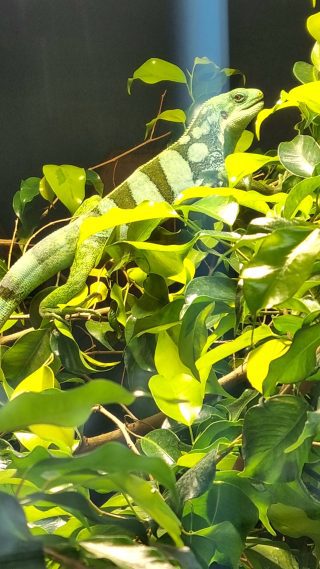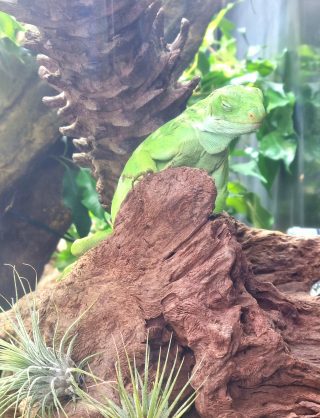Fun Facts
National Treasure
The Lau banded iguana is considered a national treasure by the government of Fiji and its image has appeared on postage stamps and currency.
Mating behaviour
Before mating, male iguanas will often head bob and flick their tongue to get the females’ attention.
Isolation
The Lau banded iguana is one of the few iguanas found outside of the New World and one of the most geographically isolated members of the Iguana family.


